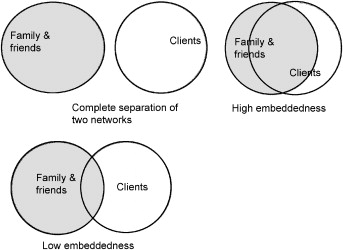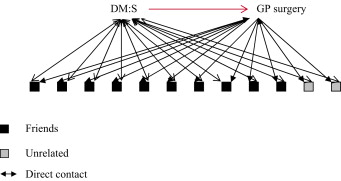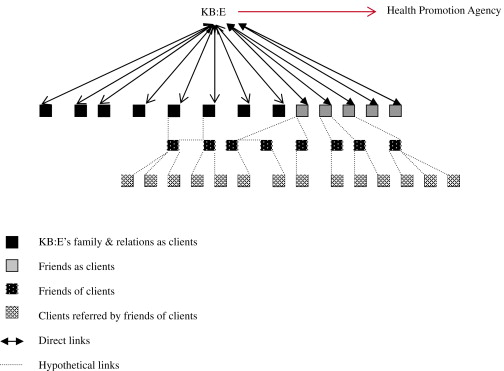In class, we explored the advantages of being embedded in a network. As opposed to a node that lies on the fringes of a network, a node in the center of a network has edges with every node in the network, which allows it to interact with these other nodes directly. The influence of this position was explored in a study of social networks conducted in the UK.
This study can be found here:
Health intervention in social context: Understanding social networks and neighbourhood
An organization called Community Health Educators (CHE’s for short) was studied, because they recruited individuals from the neighborhoods of target communities for health interventions because these individuals were assumed to be well embedded in those networks. There were 53 CHEs, half of whom were white (the white CHE’s) and the half whom were from minority ethnic groups (the BME CHE’s). Quantitative data, such as the number of clients that had that were either family, friends, or acquaintances, was collected to establish a ratio of embeddedness.
The basis of these scores can be seen in this diagram:

Qualitative data, such as interviews with the CHE’s, were also collected. These interviews also helped to explain some of the quantitative data.
Despite the fact that this study was rather crude in its attempt to measure embeddness, it still offered new insight into the pathways of social networks. The results from this study show that even though a well embedded node might have many connections within its network, it still might not be as effective as less embedded node in spreading and gathering information. This all relates back to the concept of strong and weak ties, and structural holes. In this study, a majority of the embeddedness resulted from the presence of strong ties between the CHE’s and their communities. This meant that these CHE’s use their families and friends as clients or as a source for finding clients. But since strong ties exist between these CHE’s and their networks, this means that homophily is present as well. Since there are most likely edges between all these nodes in these networks, the influence that a CHE can have is, in a way trapped within these edges.
The consequences of these strong ties can be seen here:

On the other hand, this study shows that structural holes are a better determinant of structural ties. This can be seen in the data collected from one of the CHE’s, who was referred by friends of clients.
Her network can be seen here:

From this graph, we can see that the non-redundant relationship that results from structural holes is more effective in health promotion.


* You can follow any responses to this entry through the RSS 2.0 feed.